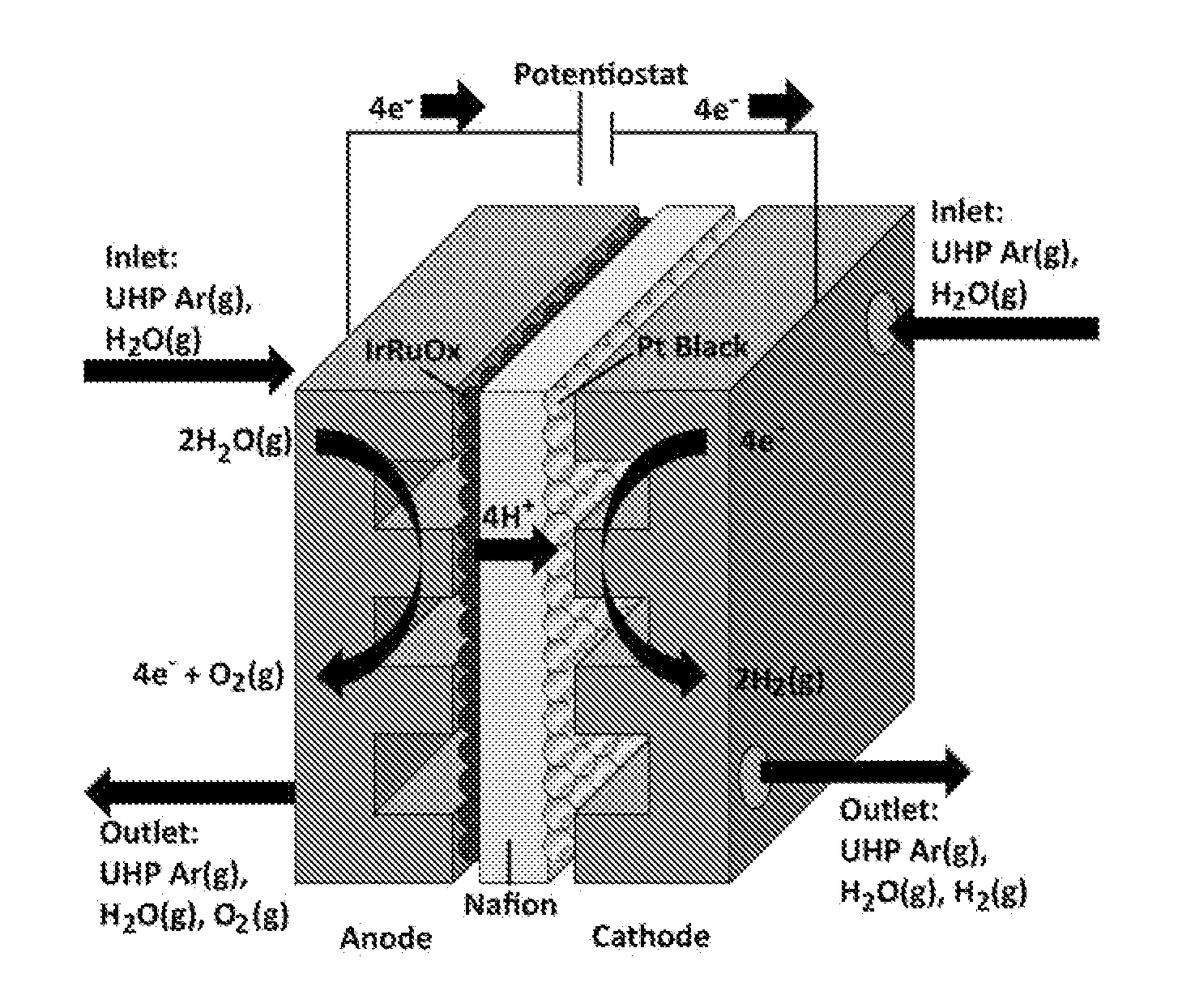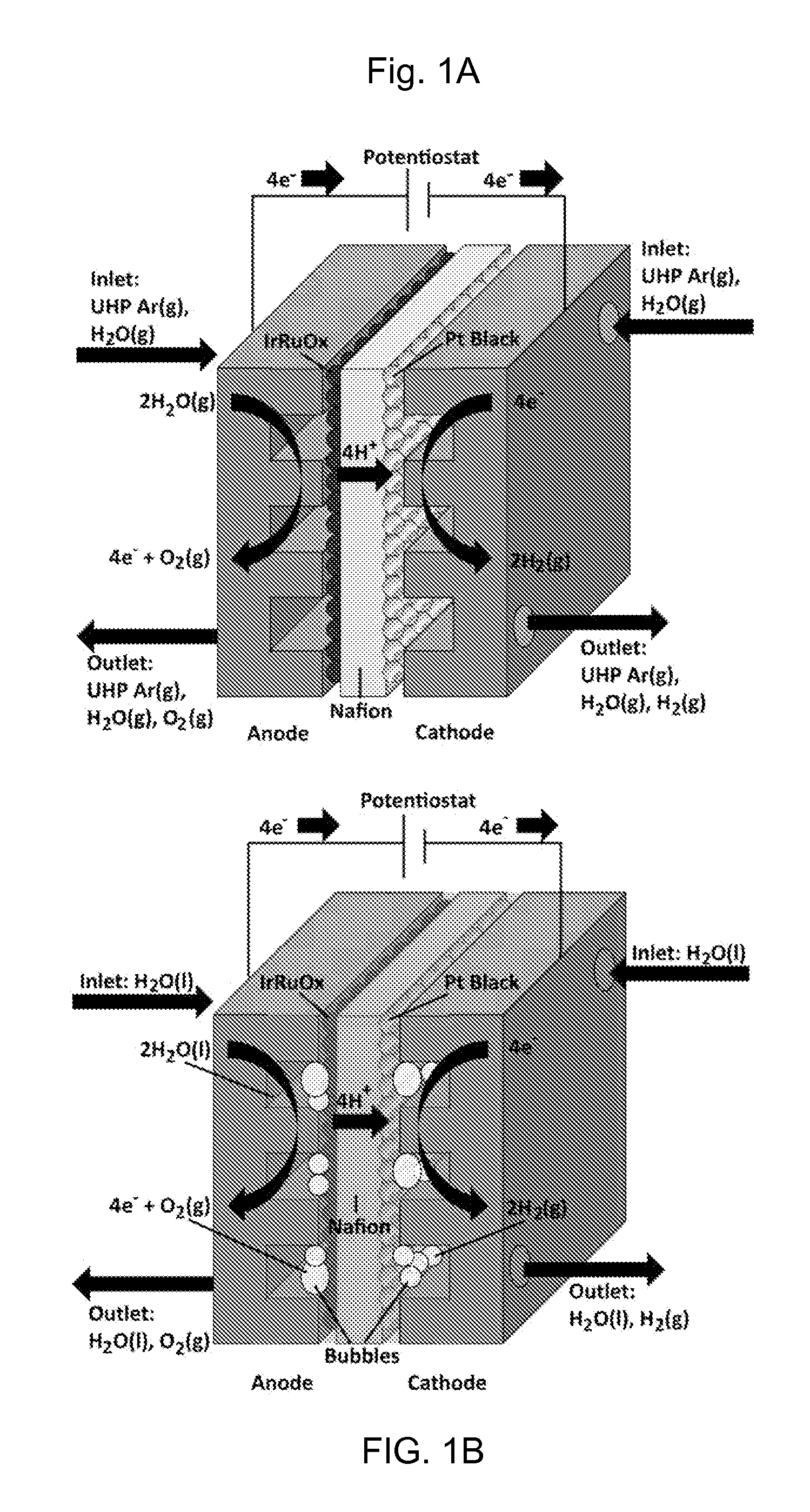Proton exchange membrane electrolysis using water vapor as a feedstock
a technology of proton exchange membrane and water vapor, applied in the field of electrolysis cells, can solve the problems of no solar fuel industry and associated energy loss
- Summary
- Abstract
- Description
- Claims
- Application Information
AI Technical Summary
Benefits of technology
Problems solved by technology
Method used
Image
Examples
Embodiment Construction
[0043]We have constructed and operated a light-driven proton exchange membrane (PEM) electrolytic cell that uses water vapor as the feedstock and that has no wires or connections whatsoever to an electrical power source of any kind. In one embodiment, a proton exchange membrane electrolyzer was constructed using an IrRuOx water oxidation catalyst, a Nafion® membrane, and a Pt black water reduction catalyst. The current-voltage characteristics of the proton exchange membrane electrolyzer under operation with water vapor from a humidified carrier gas, have been examined as a function of the gas flow rate, the relative humidity, and the presence of oxygen. The performance of the system with water vapor was also compared to the performance when the device was immersed in liquid water. With a humidified Ar(g) input stream at 20° C., an electrolysis current density of 10 mA cm−2 was sustained at an applied voltage of ˜1.6 V, with a current density of 20 mA cm−2 observed at ˜1.7 V. In the ...
PUM
| Property | Measurement | Unit |
|---|---|---|
| current density | aaaaa | aaaaa |
| current density | aaaaa | aaaaa |
| current density | aaaaa | aaaaa |
Abstract
Description
Claims
Application Information
 Login to View More
Login to View More - R&D
- Intellectual Property
- Life Sciences
- Materials
- Tech Scout
- Unparalleled Data Quality
- Higher Quality Content
- 60% Fewer Hallucinations
Browse by: Latest US Patents, China's latest patents, Technical Efficacy Thesaurus, Application Domain, Technology Topic, Popular Technical Reports.
© 2025 PatSnap. All rights reserved.Legal|Privacy policy|Modern Slavery Act Transparency Statement|Sitemap|About US| Contact US: help@patsnap.com



